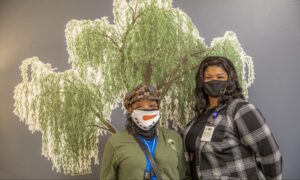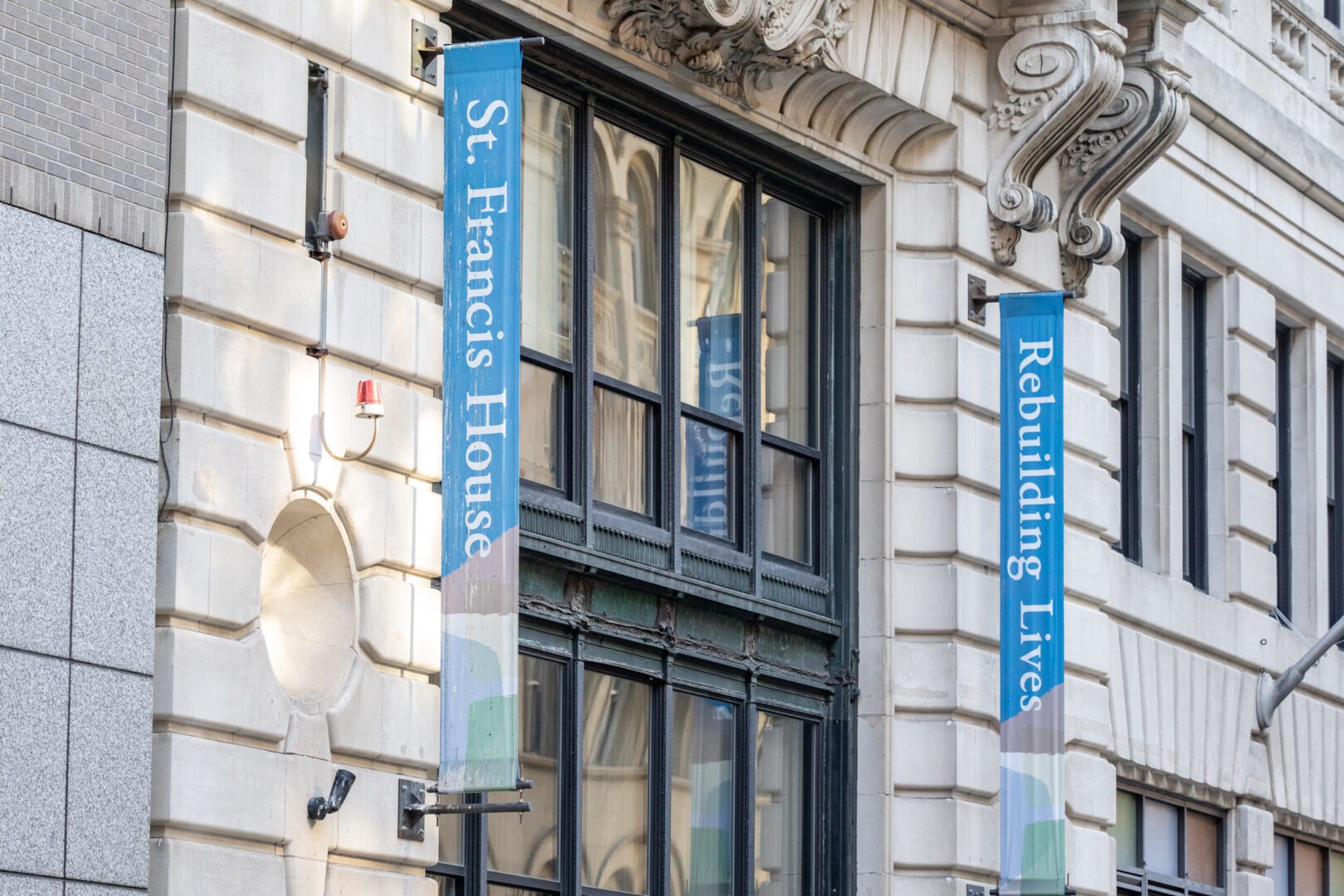St. Francis House’s Low-Threshold Shelter “The Willows” Pioneered Harm-Reduction for Women Experiencing Homelessness
In Boston and in communities nationwide, unsheltered homelessness has been on the rise, fueled by a complicated mix of economic and behavioral health factors, and significantly underpinned by the ongoing impact of opioid use. Those who are homeless face elevated risks—illness, infection, overdose, violence, exploitation—and women are particularly vulnerable. Despite the risks, many people prefer the autonomy of the street over the restrictions of traditional shelter.
In the fall of 2021, Boston’s Mayor Michelle Wu took action to address a large homeless encampment referred to as “Mass and Cass” located around the intersection of Melnea Cass Boulevard and Massachusetts Avenue. The mayor’s office collaborated with local providers to establish low-threshold shelters to encourage people to seek indoor refuge before removing tents. In response, St. Francis House opened a harm reduction-focused women’s shelter named The Willows, committing to launching and operating the shelter until a longer-term intervention could be put into place.
The primary goal of this low-threshold shelter was to convince women to move off the streets and into a safe and consistent environment. Doing so meant meeting their unique needs. As such, the team designed a harm reduction shelter model based on insights from Canadian shelter practices, local harm reduction healthcare providers, and the invaluable input of women living in encampments.
 Key Features of The Willows
Key Features of The Willows
Home-like environment:
Guests had their own dedicated beds and dressers in shared cozy rooms.
Flexible Check-In:
Guests could come and go as needed, as long as they checked in once per day. This gave them much desired autonomy and fostered trust. Just like at home, they were able to eat, sleep and shower on their own schedule.
Harm Reduction Policies:
It was understood that guests would likely continue to use drugs during their stay. Staff were trained in a range of harm reduction approaches to ensure that guests stayed safe and gave guests guidance and suggestions for how to stay safe even outside the shelter. Bathrooms and showers were equipped with reverse motion detectors that alerted staff to any potential overdoses in those private areas.
Amnesty Boxes:
Unlike traditional shelters that require guests to dispose of drugs and other personal protection items such as pocket knives, at the Willows, each guest was given a small box into which they would be expected to put these belongings. The box was kept in a locker on the floor, and items were returned to guests upon request and when exiting the shelter.
Harm Reduction Supplies:
Guests had 24/7 access to harm reduction supplies, such as safer use kits, condoms and naloxone (Narcan).
Program Evaluation
After establishing and operating the model for nine months, St. Francis House thoughtfully handed off the operations of the Willows to another organization. Before doing so, leadership wanted to capture the insights gained from the experience. A team of evaluators was brought on board to tell the story about what worked, what didn’t and what other providers and communities could learn from the experience.
As part of the evaluation, the team reviewed shelter operations and survey data, and interviewed both guests and staff. The results revealed overwhelming approval from guests, emphasizing the shelter’s positive impact on their autonomy, dignity, and safety. The staff’s commitment to building relationships and the value of daytime access to the shelter were highlighted as key contributors to its success.
The evaluation also revealed the tensions involved in harm reduction work, particularly for staff who have lived experience of addiction themselves or in people close to them. While most staff fully embraced the low-threshold model, some expressed concerns that it enabled drug use without pushing guests to “get better.” Even so, in policy and practice, the overall commitment to the safety, dignity and stability of the guests was evident, reinforcing the importance of this alternative shelter approach.
The Willows stands as a beacon of innovation in addressing the complex issue of homelessness and substance use disorders. While not a substitute for overarching housing reform, shelters like The Willows play a vital role in meeting the specific needs of women facing unsheltered homelessness. The harm reduction-focused model emphasizes one of the core values of St. Francis House: Always treat guests with respect, dignity, and autonomy.
Read more about The Willows in this article published in the Harm Reduction Journal.
Related post- Finding Resilience & Hope at the Willows – St. Francis House (stfrancishouse.org)
